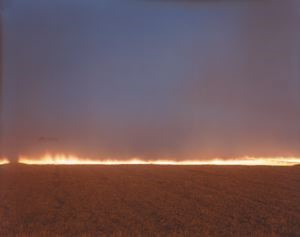Introduction
The more clearly we can focus our attention on the wonders and realities of the universe about us, the less taste we shall have for destruction.
— Rachel Carson
For over two generations since Rachel Carson’s landmark book Silent Spring (1962) triggered the modern environmentalist movement, contemporary artists have been similarly impassioned by a primal reverence for nature. They, too, have raised questions about our rampant impact on Earth’s fragile ecosystems. We alter vast landscapes (2007.12), manipulate biological processes (2010.03.02), globally redistribute flora and fauna, and contaminate water, air, and soil in order to harness the power of nature (2005.15.02.01) (2005.15.02.02). Our actions disrupt the delicate balance between living things and their environments, including our own. Over time, we have dismissed and thereby endangered our sense of wonder for the natural world.
The artists in Indestructible Wonder explore the precarious relationship between nature and humanity in a range of artworks primarily drawn from the permanent collection of the San Jose Museum of Art. Seductive depictions of polluted landscapes (2008.15) and distressing portraits of threatened wildlife (2010.08.07) reveal our habit for destruction, triggering fundamental questions about what it means to be human. How will humanity’s time on Earth be marked in the geologic record? What will our legacy be? The artists in this exhibition share Carson’s conviction that imagination and curiosity are essential to life. They demonstrate that close observation of the rhythms and cycles that govern the planet (1998.23.01) can transform our understanding of nature and make our sense of wonder so indestructible that it inspires and admonishes us to impart this awareness to the generations to come.

